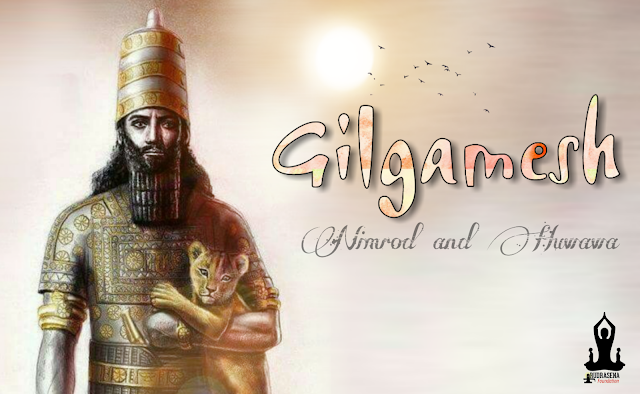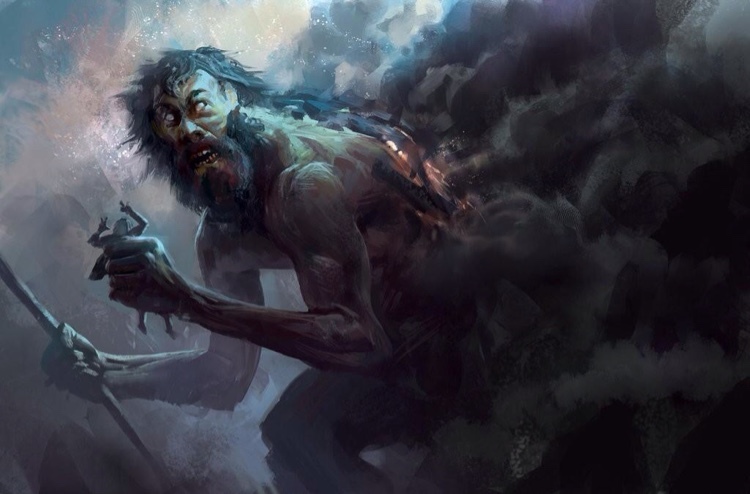Gilgamesh, Nimrod and Huwawa
First, what does the name Nimrod mean? It comes from the Hebrew verb meaning "rebel." Thus "Nimrod" may not be the person's name at all. It is more likely a term representing rebellion against the modern one god religious systems.
We can see a person in the pre - Biblical literature, in the ancient Sumerian clay tablets. He was the mighty king Gilgamesh.
Because of the parallels between Gilgamesh and Nimrod, many scholars agree that Gilgamesh is Nimrod.
Now let's talk about Yahweh in the Sumerian stories. In these stories Yahweh is seen as Huwawa, the Terrible. Huwawa was a monstrous giant of immemorial age. He was the guardian of the pine Forest.
Facing Down Huwawa
Having prepared weapons, Gilgamesh sets out for the Cedar Forest with Enkidu. Accompanying the pair were 50 young men from the city. During the journey to the Cedar Forest, Gilgamesh went up on a mountain, and made a flour offering there, after which he received a dream. This happened three times, and each dream was interpreted by Enkidu. Gilgamesh was distressed by his dreams but was assured by his friend that the dreams were auspicious, and that they would triumph over Huwawa.
Tablet V begins with the party’s arrival at the Cedar Forest, which they enter, and come face to face with Huwawa. The monster begins to threaten Gilgamesh and Enkidu and succeeds in intimidating the former. Enkidu, however, provides Gilgamesh with words of encouragement to strengthen his resolve. Having called out to Shamash, the god of the sun, Gilgamesh proceeds to attack.
From the Epic of Gilgamesh , we are told that Huwawa is protected by seven cloaks or ‘radiances’, six of which were removed by Shamash. The god continues to aid Gilgamesh during his battle by summoning great tempests to incapacitate the monster, thus allowing Gilgamesh to vanquish it.
Having been defeated, Huwawa begins to beg for mercy. Enkidu, however, warns Gilgamesh that the terrible beast is not to be trusted, and urges the hero to slay him. Seeing that no mercy would be shown, Huwawa curses Gilgamesh and Enkidu, “Neither one of them shall outlive His friend! Gilgamesh and Enkidu shall never become old men.”
In another version, on the same Kish Tablets, Gilgamesh is killing “The Bull of Heaven”. It is most likely that Huwawa and this Bull is the same mythological figure, namely the astrological star sign of Taurus.
The age of Taurus was between 4320 BC and 2160 BC, precisely the same period as the Sumerian culture. By killing the Bull, Gilgamesh put an end to the age of Taurus, and welcomed the age of Aries the Ram (the age of Judah)
By these words you might recognize another biblical story about the tribe of Dan, accused of worshiping a golden calf. From this point of view, Moses was angered by the simple fact that the Age of Taurus was actually over, and that the people of Dan now had to worship Aries the Ram instead. It is not really about idolatry.









There's however not much that supports the claim that the creator Yahweh would be the same as the giant Huwawa / Humbaba. Also, Yahweh is more connected with mountains. Huwawa was set by Enlil to guard the forest where the gods lived. There's also an other version where the giant is more favoured and described more positively. As for Moses' reaction of the calf worship, you clearly haven't read the whole text, your idea has no support what so ever.
ReplyDeleteIsso mesmo!!!
DeleteWow, people love to interpret the Bible in a way that excuses their sins, but Jesus still had to die on a tree that we may be redeemed.
ReplyDeleteAlexander hislop is work is not reliable
ReplyDeletethis is a gross simplification of a story of gilgamesh. A way to justify religious centrism through unsupportive interpretation of historic text
ReplyDelete